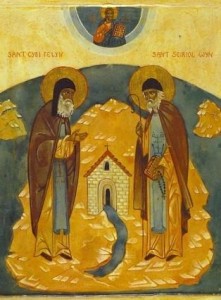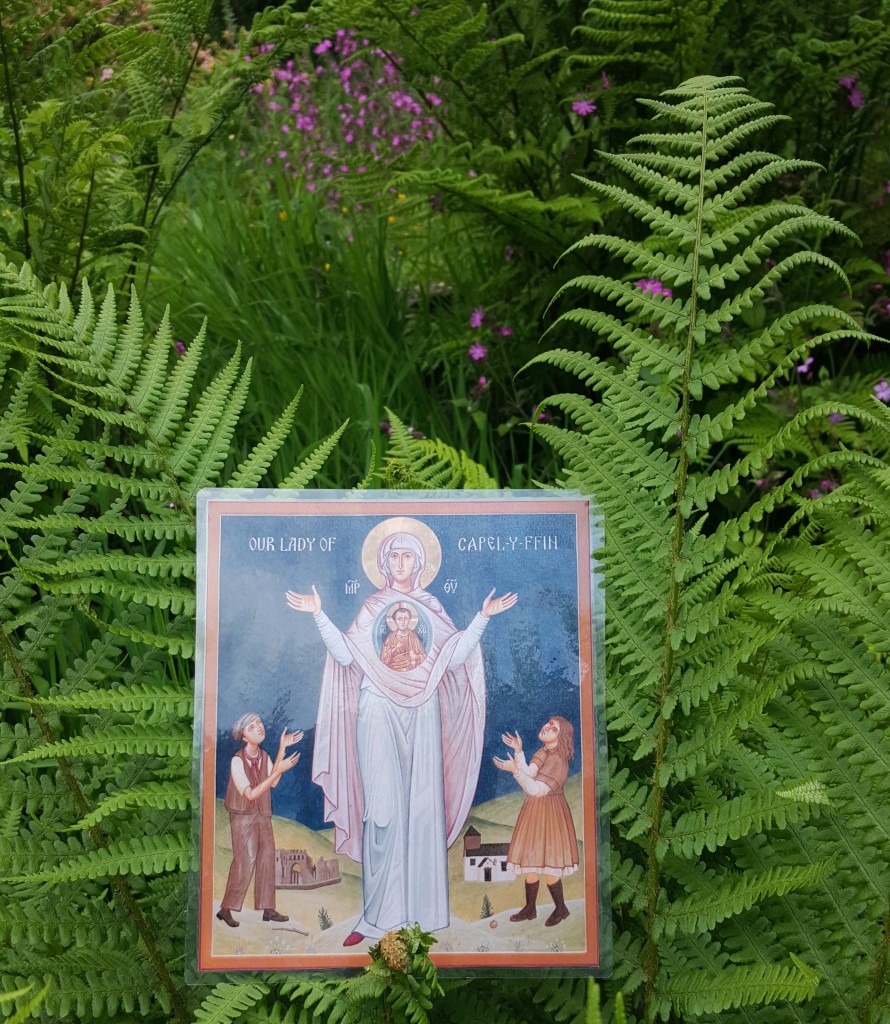by lampeter | Jun 16, 2015 | Saints

St Cybi
Cybi was born in the late 5th century, the son of a Cornish nobleman, Selyf ap Geraint ap Erbin. His mother is reputed to have been a sister of St Non, which would make Cybi a cousin of St David.
He was raised a Christian and is said to have visited Rome and Jerusalem as a young man. On his way home he was ordained priest by the Bishop of Poitiers.
He renounced his inheritance on his father’s death and began to travel in the Celtic world. He founded churches in Brittany and Cornwall before crossing to South-East Wales with several followers. Churches were established at Llangybi-ar-Wysg and Llanddyfrwyr-yn-Ediligion in Gwent. From there Cybi may have travelled to Ireland before returning to Wales. Dedications at Llangybi (near Lampeter) and Llangybi (near Pwllheli) would suggest that he may have resided in these places for some time.
Given land by King Maelgwn of Gwynedd, Cybi established a monastery at Caer Gybi (Holyhead) on Ynys Gybi (Holy Island) in Anglesey. He became a friend of St Seiriol who also had a monastic settlement on the opposite side of Anglesey.
It is said that Cybi attended the Synod at Llandewi Brefi in 545 and later retired to live on Ynys Enlli (Bardsey Island) where he died about 555 and was buried there among the 20,000 saints though some claim he was buried at Capel y Bedd adjoining his monastery.
The Orthodox Church at Lampeter hold an annual Artoklasia at the Well of St Cybi in November.
Troparion (Tone 1)
By your journeyings, O Hierarch Cybi, you teach us the virtue of making pilgrimages. Wherefore, O Prince of Ascetics and All-praised Wonderworker, we entreat you to intercede for us that Christ our God will not find our lives to be utterly worthless and will show us great mercy.
by lampeter | Jun 15, 2015 | News
7.30 pm on Sunday 23rd August in Llaneglwys Village Hall – Entrance £3.00 (children £1.50) to include light refreshments
What is the purpose of painting? A controversy from the eighth century.
An illustrated talk by Peter Brooke
Towards the end of the eighth century, a church council held in Nicaea, in what is now southern Turkey, ruled that painted images (‘icons’) could be used as objects of veneration. Shortly afterwards a major attack was launched against this Eastern council under the auspices of Charlemagne, soon to be crowned first Emperor of a renewed ‘Roman’ Empire in the west. This was a major event in the process by which the Western (‘Roman Catholic’) and Eastern (‘Orthodox’) churches separated. But important as the political and theological aspect was, Peter Brooke argues that it also reflected a radical difference between the ‘classical’ art of Greece and Rome and the very different art that had developed in the West and is known as ‘Celtic’ or ‘insular’ art.
by lampeter | Jun 4, 2015 | News

Saturday 22nd August 2015
Ecumenical Service at St Mary’s Church, Capel y Ffin, Llanthony, Gwent.
15.30hrs
Preacher, Metropolitan Kallistos of Diokleia
Prior to the Service Pilgrims are offered to walk the three miles from Llanthony to Capel y Ffin
by lampeter | Jun 1, 2015 | News
The Illness and Cure of the Soul in the Orthodox Tradition
A talk by Peter Brooke
In the Three Horseshoes Inn, Orchard Street, Llanfaes, Brecon
on Thursday 18th June 2015 at 7.30 pm
‘The Illness and Cure of the Soul in the Orthodox Tradition’ (English translation: Birth of the Theotokos Monastery, Livadia, Greece, 1993) is the title of a book by Hierotheos Vlachos, Metropolitan of Nafpaktos in Greece, a sequel to his ‘Orthodox Psychotherapy’ which attracted a great deal of attention in Greece when it was first published in the 1980s. Metropolitan Hierotheos argues that whereas the Western tradition tends to understand the economy of salvation judicially in terms of atonement for an offence committed against God, the Orthodox tradition understands it therapeutically as a process of healing. ‘The Church … is a spiritual hospital …’. This is the theme Peter hopes to develop with a very disparate group of people in the ‘Brecon Political and Theological Discussion Group’.
The text of Peter’s talk can now be read here.



Recent Comments